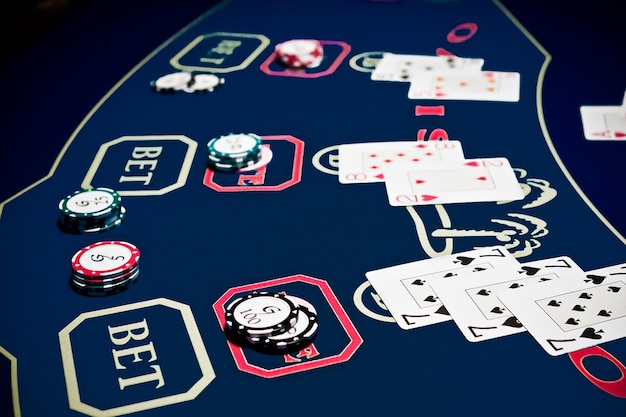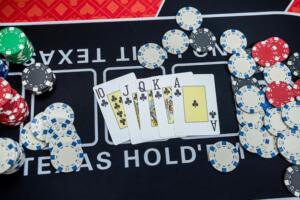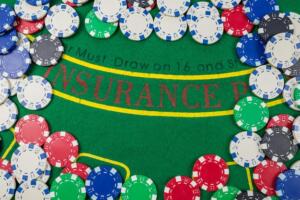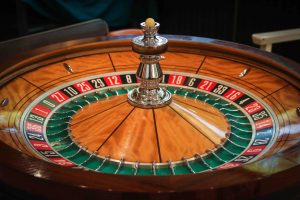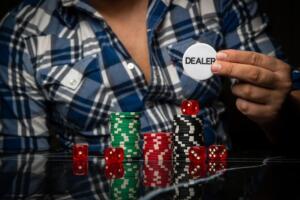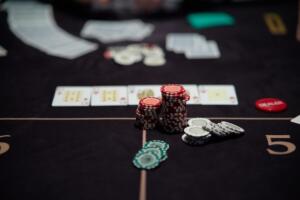Opponent Checked Back: Now What? Part I
Over the years, I’ve primarily focused on playing as the aggressor, especially during the flop. This stage is crucial as it lays the groundwork for everything that follows. However, in this piece, we’ll shift our attention to situations where your opponent has opted not to bet. These scenarios are filled with opportunities to enhance your expected value (EV), yet they’re often mishandled—even by top players in online settings. While I’ll mainly discuss how to navigate hands when your opponent skips a continuation bet, the same principles apply when they forgo their chance to stab.
Let’s dive into the intricacies of this situation.
- Understanding the Importance of the Flop: The flop is pivotal, not just for generating value but also for protecting against value loss on later streets.
- Two Main Goals: Your objectives are to exploit your opponent’s mistakes while avoiding being exploited yourself.
- Common Mistakes: Players often mismanage their range composition, leading to predictable strategies.
The Power of Position
The reason these scenarios present such a strong opportunity to boost your EV is straightforward: executing an effective continuation betting (c-betting) strategy in position is challenging and easy to misjudge. Even skilled players frequently create imbalances on later streets that are tough to amend, sometimes even when they recognize the issue.
As previously mentioned, the flop serves as the cornerstone of a successful strategy. This isn’t solely because you can generate substantial value there (though you sometimes can), but more importantly, strong play on the flop shields you from losing value by being exploited on the turn.
Exploiting Opponent Mistakes
Your goals are twofold: take advantage of your opponent’s errors while minimizing your own vulnerability. These objectives often conflict, and which one takes precedence largely depends on your opponent’s capacity to identify and exploit your imbalances.
In the following sections, I’ll illustrate how to shift your focus toward your opponent and capitalize on weaknesses in their flop c-betting strategy. There are three primary areas where players frequently err:
- Range composition
- Bet sizing
- Timing of aggression
Focusing on Range Composition
Among these areas, range composition is paramount, and it’s the primary focus of this discussion. This is likely the most prevalent mistake you’ll encounter, as it directly correlates with one of our core human biases: risk aversion.
Risk aversion is the innate tendency to steer clear of situations that seem perilous or uncertain. From an evolutionary perspective, individuals who exhibited risk-averse behavior were more likely to survive and reproduce. Those who took reckless risks—like sampling unknown berries or touching venomous snakes—often didn’t live long enough to pass on their genes.
In poker, this bias frequently manifests as a risk-averse strategy: players tend to invest money only when they possess a strong chance of winning, primarily betting with high-equity hands (including robust draws). At first glance, this strategy appears reasonable. However, against a perceptive opponent, it can quickly backfire.
Recognizing Predictability
Once an attentive adversary notices that you only bet strong hands, they’ll likely stop paying off with their weaker holdings and may even ramp up their aggression to exploit your predictability. This article aims to help you capitalize on that mistake.
To clarify, let’s consider a common scenario in online play: defending the Big Blind against a Button open. Suppose the flop comes Js 8s 3d.
Balanced C-Betting Strategy
Let’s examine what a well-balanced c-betting strategy should entail:
We’ll concentrate on range composition, starting with strong hands like top pair and better. A solver typically mixes checks and bets with these hands: pocket Aces about 50% of the time, AJ around 20%, KJ about 60%, QJ about 70%, and J7s–J5s close to 90%.
Most players, however, approach these spots differently. They evaluate their top pair, recognize the draw-heavy board, and end up betting nearly all of their QJ and better hands. This tendency is crucial to note as we develop our exploitative model.
Bluffing Strategies
Next, let’s analyze the bluffs, starting with flush draws. A solver checks back with roughly one-third of its flush draws. In practice, though, most opponents rarely check back that many flush draws—if any at all.
Now, let’s explore open-enders and gutshots. Similarly, the solver checks back with about one-third of these draws. In contrast, most players default to betting all of them.
Understanding Weak Bluffs
Finally, let’s examine how the solver approaches other non-made hands—what we can categorize as weak bluffs. Before diving into specifics, it’s essential to highlight one key detail: the solver has almost twice as many weak bluffs betting as strong bluffs—44 combos versus 28 combos.
A significant portion of these weak bluffs includes hands with a backdoor flush draw, such as As 6x, Ks Ts, or Qd 5d (approximately 31 of the 44 combos, ~66%). The remainder consists of hands with only an overcard and sometimes a backdoor straight draw—think Ad 6h, Kc Td, or Qh 6h (around 13 of the 44 combos, ~33%).
Now consider: does this resemble the strategy of your typical opponent? Do they genuinely bluff with Ad 6h? What about Kh 9c or Qc 5c? From experience, the answer is usually no.
Modeling Opponent Strategies
To illustrate this, I node-locked the Button’s strategy to better reflect what you’ll encounter against risk-averse players. The overall betting frequency remains unchanged—it’s still around 50% of the range—but the composition now carries considerably more equity against your holdings.
The first chart shows the equity of the theoretically optimal betting range against your range. The second illustrates the high-equity betting strategy of a risk-averse opponent. The difference is about 4%. While this may not seem substantial, in poker—where small edges accumulate over time—it’s a significant gap, particularly on the flop.
Impact on Turn Strategies
If you’re still skeptical, examine the effect this equity shift has on your theoretically optimal turn probing strategy. The first chart displays the theoretically optimal strategy against an optimal flop check-back range. The second showcases the optimal strategy against the weakened, risk-averse check-back range.
While there’s much to unpack in these two representations, two points stand out:
- Every made hand gains in value.
- Top pairs are upgraded from block-bet value hands.
Reader Q&A
1. How can I identify a risk-averse opponent?
Look for players who only bet strong hands and rarely bluff. They tend to have predictable betting patterns.
2. What adjustments should I make against these opponents?
Capitalize on their predictability by bluffing more often and betting with a wider range of hands.
3. How important is it to balance my betting strategy?
A balanced strategy helps prevent opponents from exploiting your tendencies, making it crucial for long-term success.
